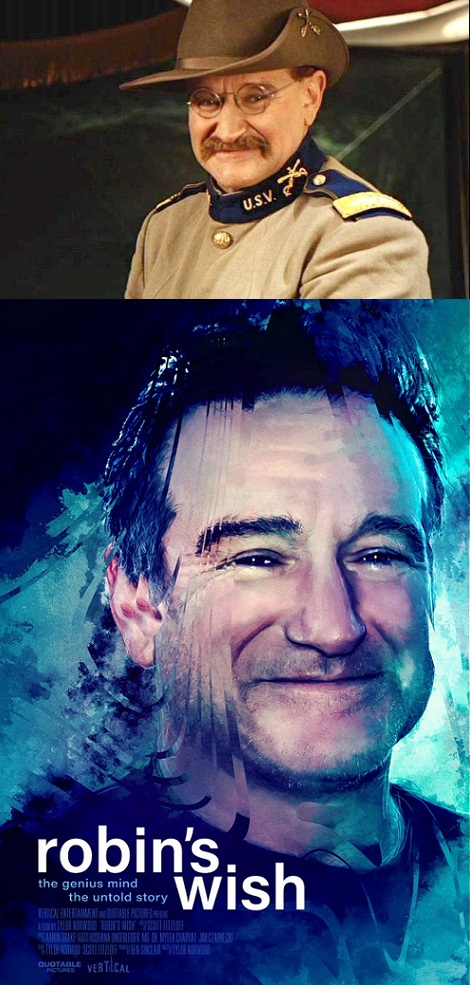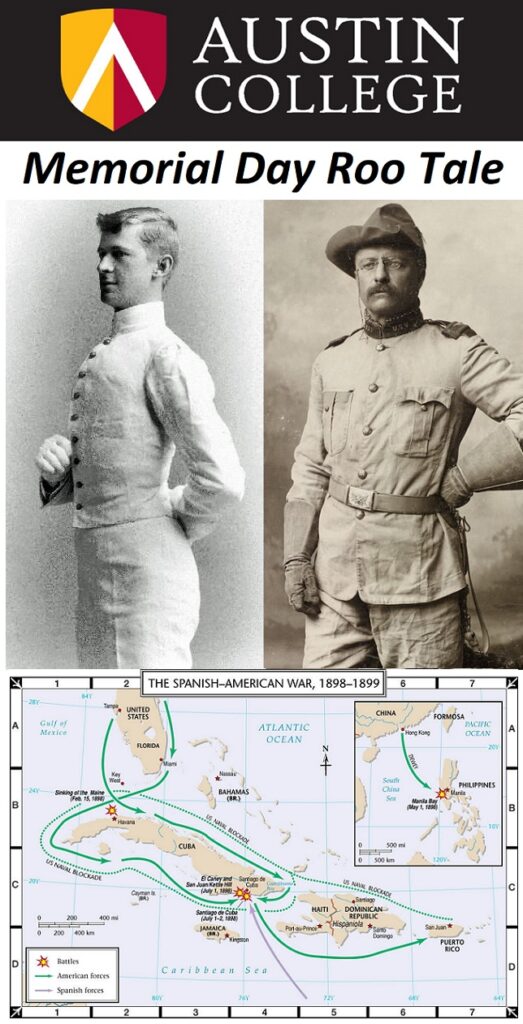
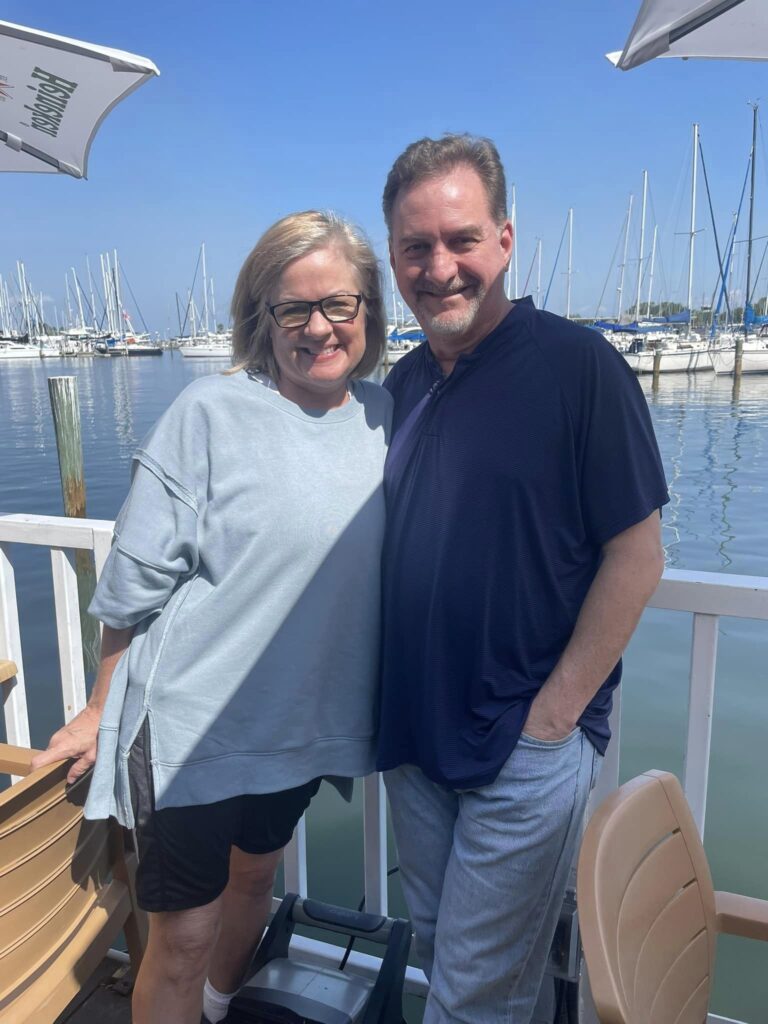
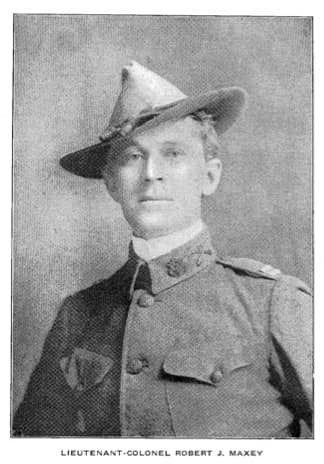
Family travel this week takes lovely Dianne and me to Tampa. We took this harbor pic by the boats.
Tampa was also the place Teddy Roosevelt left to fight in the Spanish-American War. Teddy left Tampa by boat. Roosevelt and his Rough Riders achieved fame during that war by summiting San Juan Hill.
But guess what? Roosevelt never climbed San Juan Hill. He climbed a different hill and later claimed San Juan as his own.
But there was a company of soldiers that did summit San Juan Hill. And that company included an Austin College Kangaroo.
Every year I write a Memorial Day Roo Tale about a fallen Kangaroo soldier. This year’s tale will be about Roo Robert J. Maxey, a Spanish-American War veteran who did what Roosevelt did not.
Tomorrow we leave Tampa, like Roosevelt 125 years ago. But we’re not leaving for Cuba. We’re headed back to Texas so I can write about this Roo for Memorial Day 2024.
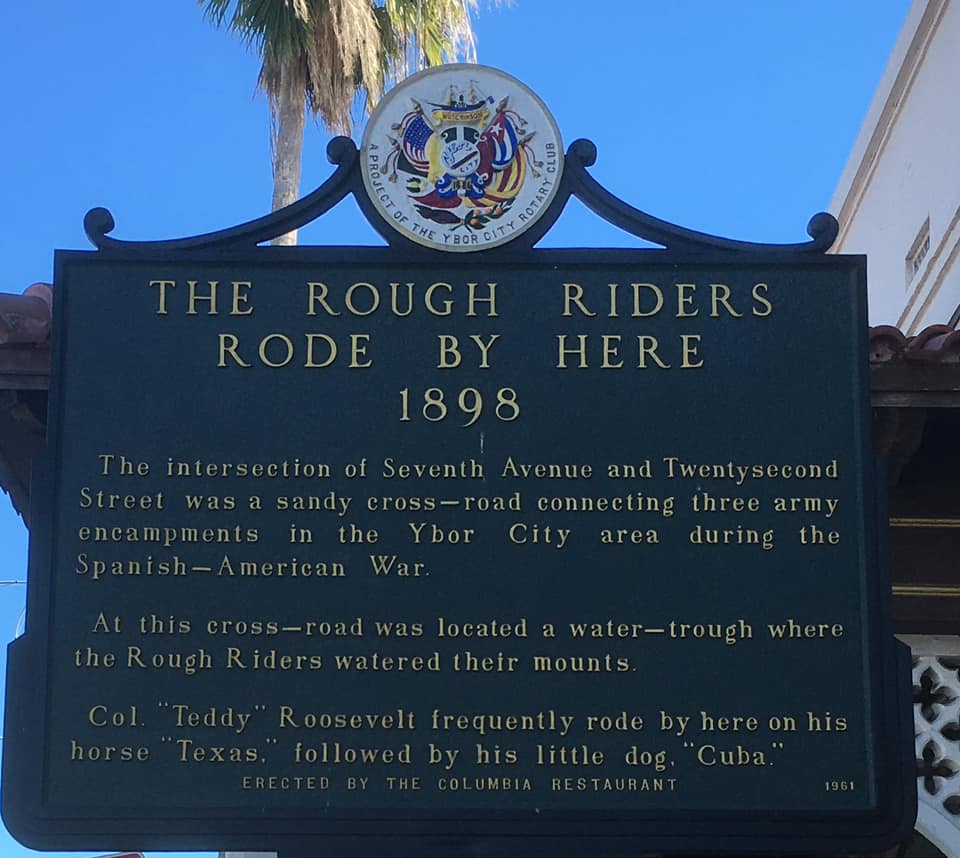
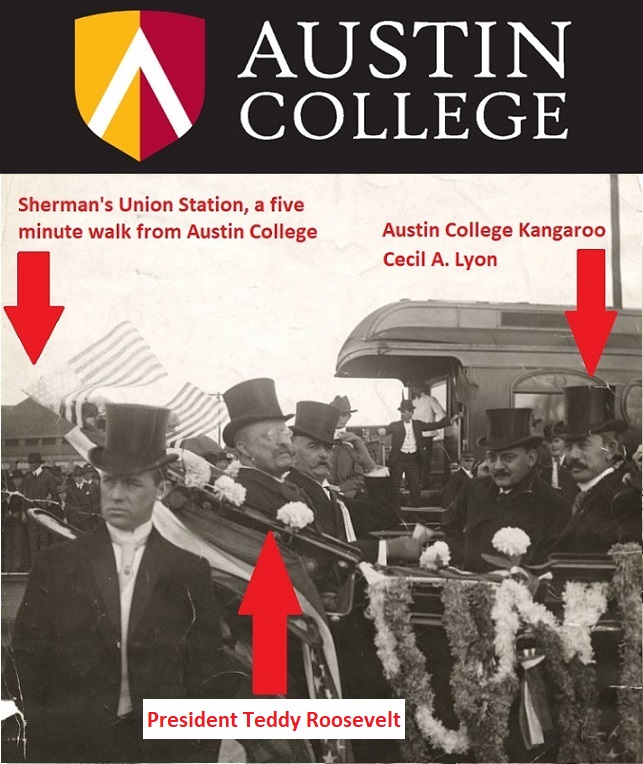
Memorial Day Preview #1, Friday, May 17th:
Teddy Roosevelt, Cecil Lyon, and the 1905 Rough Rider Reunion
Memorial Day Preview #2, Monday, May 20th:
Marc Parrish, Robert Maxey, and Spain’s “Generation of ’98”
Memorial Day Preview #3, Wednesday, May 22nd:
Austin College & Texas A&M during the 1890s Age of Empire
Memorial Day Preview #4, Friday, May 24th:
“Kangaroos Go to War,” a Marc book inspired by ties to the Dethloff family of AC & Texas A&M
Memorial Day Roo Tale, Monday, May 27th:
Teddy Roosevelt, Robert Maxey, and the Spanish-American War at San Juan Hill
=======================================
Preview #1, Friday, May 17th:
Teddy Roosevelt, Cecil Lyon, and the 1905 Rough Rider Reunion
So, I’ve written a Memorial Day Roo Tale about an Austin College soldier who fought in the Spanish-American War. It will be shared on Memorial Day, May 27th. It’s about Roo Robert J. Maxey, who ascended San Juan Hill alongside the Rough Riders of Teddy Roosevelt.
Teddy Roosevelt knows all about the Rough Riders. He also knows all about Austin College. In fact, one of his good friends was a Roo. How good? So good that this AC grad saved Teddy Roosevelt’s life. His name was Cecil A. Lyon.
Colonel Cecil A. Lyon enrolled at Austin College after his family moved to Grayson County. He graduated in 1884 with a degree in business. Lyon’s interests ranged from the family business to the military after his Austin College days. But his top devotion was to politics. And Lyon was the rarest of political birds in Texas during the 1890s. Like Roosevelt, Lyon was a Republican.
Like every Southern state, the Democratic Party dominated Texas politics at the end of the 19th century. But nationally, the country titled towards Republicans. That tilt meant immense power for Republican leaders in states like Texas. As Teddy Roosevelt was campaigning for re-election in 1904, Cecil Lyon was helping Roosevelt as Chair of the Texas Republican Party.
Because Texas had no elected Republican officials, Lyon was able to personally approve all federal political appointments in Texas. With this Tammany Hall-like control during an era of very limited democracy, Lyon was also able to ensure that only loyal Roosevelt friends were selected as delegates to the party’s national convention.
More than that, Lyon was a Roosevelt ally during a time when the Republican party was splitting between a more progressive (Teddy Roosevelt) wing against a more traditional (William Taft) wing. The confluence of these events resulted in the inevitable: Lyon and Roosevelt became very close friends.
Roosevelt cruised to a re-election victory in 1904, winning 56% of the vote. Despite losing Texas in a landslide, the President was still very popular personally in the Lone Star state. He was, after all, the larger-than-life persona who had recruited a “Rough Riders” cavalry full of Texans at the Menger Hotel in San Antonio back in 1898.
With his re-election secured in 1904, Roosevelt began planning a celebration: a reunion of his Rough Riders at the Menger Hotel in San Antonio. The trip was marked for April 1905, which would take the President by rail from Washington to San Antonio by way of Sherman. When Roosevelt crossed the Red River in Denison, he became the first sitting President to ever visit Texas.
Cecil Lyon made sure Roosevelt’s stop in Kangaroo land would be a memorable one.
Lyon was there to personally greet Roosevelt when his train arrived at Sherman’s Union Station, located just a few blocks west of Austin College. Lyon & Roosevelt traveled by carriage [see shared photo] to the Grayson County Courthouse, where a crowd of 35,000 had gathered to listen to a speech by the President. Roosevelt mentioned his previous trip to Texas in 1898, to recruit the Rough Riders:
“You can have no idea what a pleasure it is to me to be here again. If you are half as glad to have me as I am to be here, we will call it square. It is nearly seven years ago that I came here to take part in raising the regiment, some of my comrades from which are here to escort me today. I saw in one of the papers today the statement that they hoped I would go out of Texas thinking more of it. I do not know that that is possible, because I think so much of it already; but if I could have thought more of it, I would have thought more within the last half hour, since coming within its limits.”
Roosevelt eventually made it to San Antonio for his Rough Rider reunion. But his trip was not yet done. The President, an avid outdoorsman, was interested in a hunting trip on the open plains of Texas or Oklahoma. He asked his old Kangaroo buddy Colonel Cecil Lyon to make it happen. In a letter dated November 11, 1904, a mere three days after his re-election to the Presidency, Roosevelt responded to a congratulatory letter from Lyon with the following:
My Dear Colonel Lyon:
I think I can get down to Texas this spring, and if so, will be more than delighted to take that hunt. I am going to ask you one thing, however. If we go on that hunt, I want to confine it to the smallest number possible. I would prefer that it was only you and I and Sloan Simpson [a fellow Rough Rider]. Next spring will be my holiday, the first I will have had for four years. I would like to make the most of it. Thank you for your congratulations.
Sincerely yours,
Theodore Roosevelt
Lyon organized the small party hunting trip, which took place as requested by the President.
The Taft/Roosevelt split in the Republican party arrived in full in 1912, after Roosevelt challenged Taft as the nominee of his Progressive “Bull Moose” party. For his support of Roosevelt, Lyon was booted by Taft regulars from his position as Chair of the Texas Republican Party. Lyon responded by joining Roosevelt on the campaign trail, accompanying his friend at stops throughout the Midwest. On an October 14th stop in Milwaukee, an assassination attempt on Roosevelt was thwarted thanks to Lyon.
The potential assassin got off just one shot, which ricocheted off Roosevelt’s steel case for his glasses, penetrated a copy of a speech in his pocket, and lodged in his chest. The assassin attempted to get off a second shot, but Lyon got to him first.
From the McHenry (IL) Plaindealer: “As he was about to fire another shot, the revolver was knocked from his hand by Col. Cecil Lyon of Texas, who is accompanying Roosevelt on his midwestern campaign trip. Lyon jumped out of the automobile and started to choke the would-be assassin.”
Roosevelt, observing his normal breathing and the absence of blood in his mouth, quickly determined that the wound was not fatal. “Roosevelt, who had staggered back into the automobile when the shot was fired, raised himself up and stood up at Lyon, who was sitting on the shooter. The ex-president cried with a gesture: ‘Don’t hurt him; I’m all right.’” Roosevelt checked himself into a hospital, after delivering a speech from his bully pulpit.
After recovery, Lyon & Roosevelt resumed the campaign; a photo of Lyon & Roosevelt campaigning in New York (see the comments) from the back of a train car was taken just a week after the assassination attempt. Roosevelt’s “Bull Moose” campaign came up short in 1912; it also denied Taft his bid for re-election.
Lyon was backing another Roosevelt Presidential run in 1916 when he suddenly fell ill; he passed on an operating table in a Sherman Hospital. Lyon’s funeral took place at St. Stephens Episcopal in downtown Sherman; among those sending telegrams of condolences was Teddy Roosevelt. Lyon’s brother and family paid their respects after making the short walk down from their home on Crockett Street.
That Lyon family home on Crockett Street is better known as the “Lyon House,” a historical Sherman landmark. It was recently restored by Restoration Works Darrah Dunn in Sherman. Darrah Dunn is an Austin College Kangaroo, a member of the AC Alumni group, and a contributor to this story. The house includes an enormous cache of Lyon family memorabilia, which Darrah is excited to revisit alongside the current homeowners. I’m looking forward to him showing me the house and collections the next time I’m in the Sherman area. Thank you Darrah!
Teddy Roosevelt passed in 1919, the same year AC President Thomas Clyce invited former President William Taft to speak at Austin College. It’s also the same year AC President Thomas Clyce planted an Oak Tree on AC’s campus to honor Spanish-American War veteran Robert J. Maxey. The 2024 Memorial Day Roo Tale is about Robert J. Maxey, a Kangaroo who charged San Juan Hill alongside Rough Rider Teddy Roosevelt. It will be shared on Monday, May 27th.
The reach of little Austin College is something to behold. Teddy Roosevelt is an American icon. Yet somehow Teddy Roosevelt scaled San Juan Hill with his Rough Riders alongside ONE Kangaroo and then later organized a Rough Rider reunion with the help of a SECOND Kangaroo. That second Roo was Cecil Lyon, a good friend of the former President. How good? So good that this AC grad saved Teddy Roosevelt’s life.
More Memorial Day previews to come.
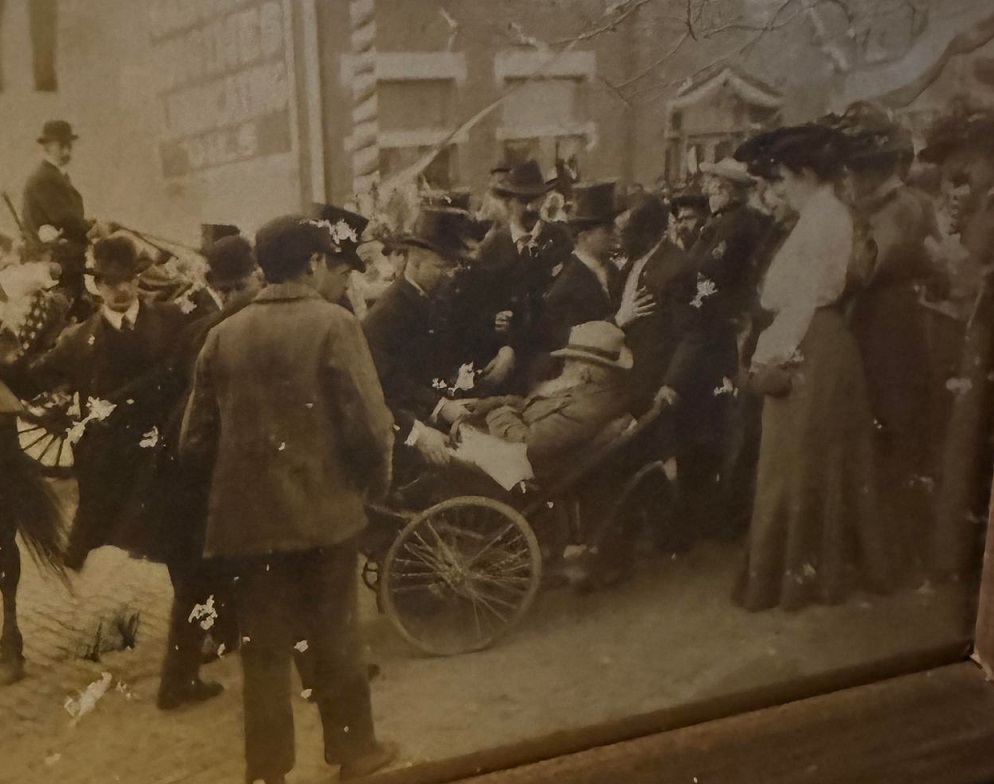
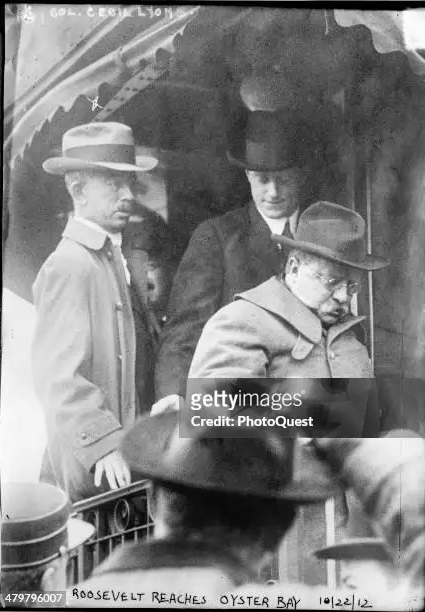
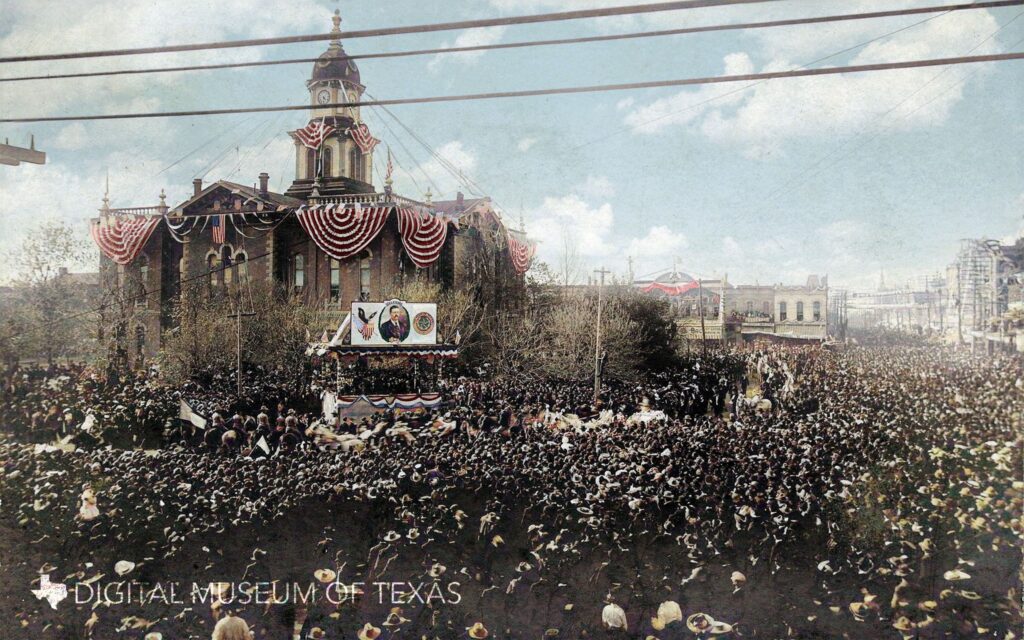
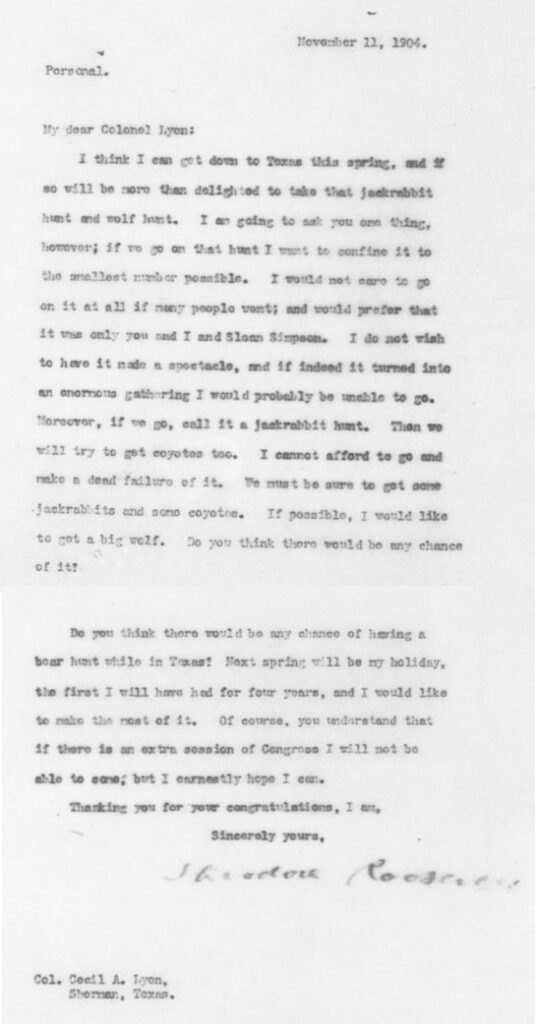
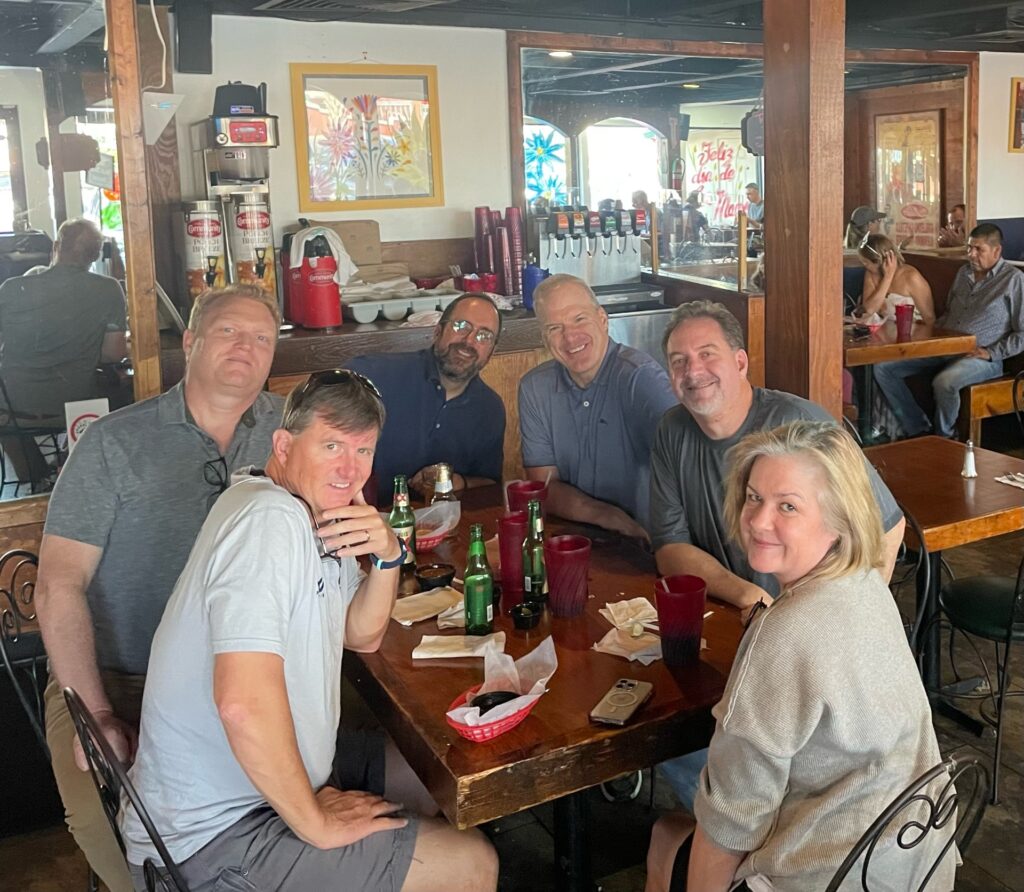
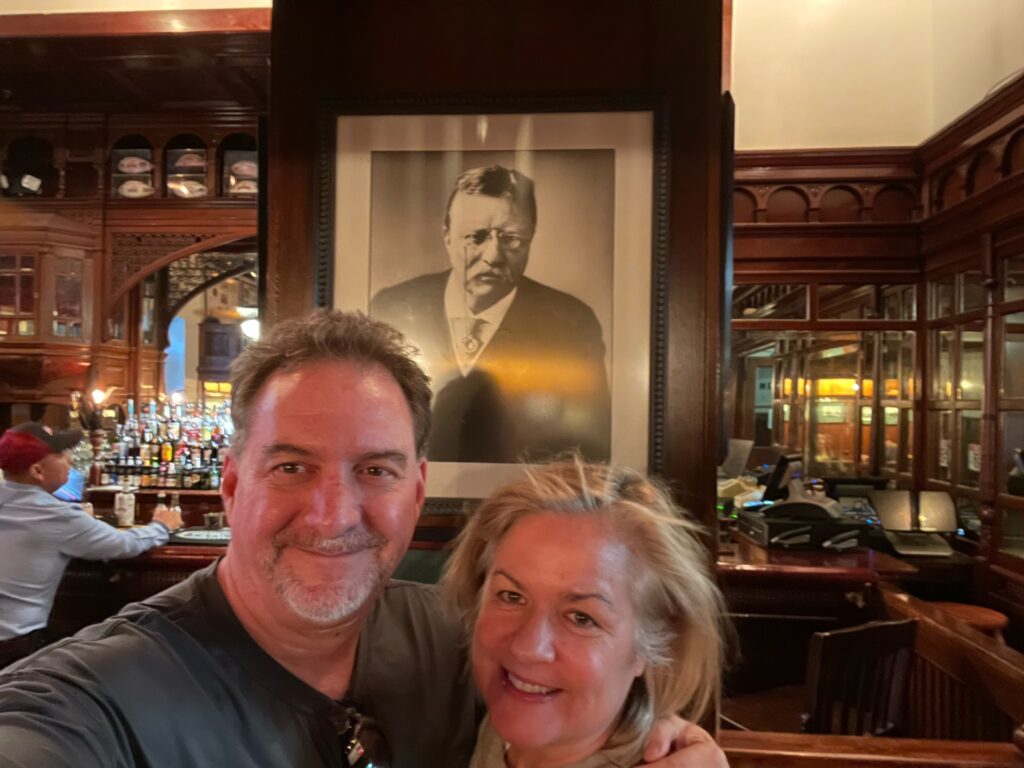
So, I’ve written a Memorial Day Roo Tale about an Austin College soldier who fought in the Spanish-American War alongside Teddy Roosevelt & the Rough Riders. It will be shared on Memorial Day, May 27th.
I’ll also be sharing a lot of Preview stories leading up to Memorial Day. This first one went up last Friday; three more will come this week. These previews also have a whole bunch of Austin College, Teddy Roosevelt, & the Rough Riders.
Yes, for me the past few weeks has been a lot of AC & Teddy, Teddy & AC.
So, it makes sense that after a reunion this weekend in San Antonio with AC buds, one of them would remind Dianne and me to swing by San Antonio’s Menger hotel bar on our way back home. You know, the bar where Teddy Roosevelt recruited the Rough Riders. Thanks fellas!
An AC writer having a beer in the bar of Teddy Roosevelt? You bet. Cause you can’t spell Roosevelt without “Roo.”
Pray for Dianne y’all. Being married to me is quite the “Rough Ride…..uhhh…..r”.
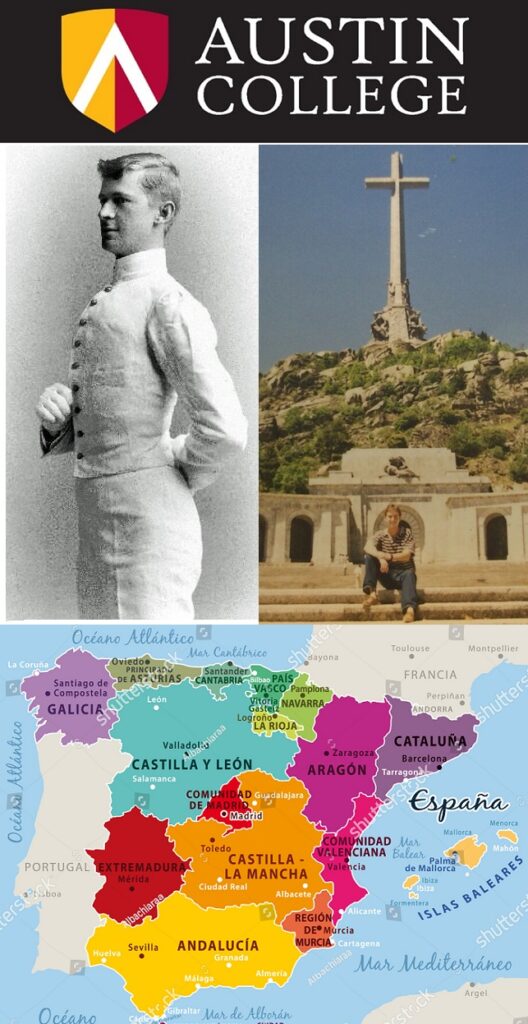
Memorial Day Preview #1, Friday, May 17th:
Teddy Roosevelt, Cecil Lyon, and the 1905 Rough Rider Reunion
Memorial Day Preview #2, Monday, May 20th:
Marc Parrish, Robert Maxey, and Spain’s “Generation of ’98”
Memorial Day Preview #3, Wednesday, May 22nd:
Austin College & Texas A&M during the 1890s Age of Empire
Memorial Day Preview #4, Friday, May 24th:
“Kangaroos Go to War,” a Marc book inspired by ties to the Dethloff family of AC & Texas A&M
Memorial Day Roo Tale, Monday, May 27th:
Teddy Roosevelt, Robert Maxey, and the Spanish-American War at San Juan Hill
=======================================
Preview #2, Monday, May 20th:
Marc Parrish, Robert Maxey, and Spain’s “Generation of ’98”
So, I’ve written a Memorial Day Roo Tale about an Austin College soldier who fought in the Spanish-American War. It will be shared on Memorial Day, May 27th. It’s about Roo Robert J. Maxey, who ascended San Juan Hill alongside Teddy Roosevelt.
Robert J. Maxey and I have a few things in common. We are both Austin College Class of ’92 (Maxey is 1892; I am 1992). Both of our AC lives were impacted by Spain (Maxey was a Roo cadet who fought Spain in a war; I studied in Spain during an AC year abroad). The United States defeated Spain in 1898 for many reasons; one reason was the bravery of soldiers such as Robert Maxey and Teddy Roosevelt. A second reason was due to technological superiority.
In 1991, I took a Spanish history class in Spanish taught by an exceptional professor from the University of Madrid-Complutense. The speed with which the instructor taught was perfect: slow enough for me to understand, yet fast enough to give my brain the much-needed headache to learn the language and keep up with the content. The prof humorously reviewed the naval battle outside Santiago, explaining how American Admirals learned of the superior range of their ships, put their vessels in reverse, and then bombarded the Spanish fleet from a distance into submission.
But there’s also a third reason which explains the American victory in 1898. Spain just didn’t try very hard.
Reactionary 1898 Spain was successfully resisting the liberal changes sweeping Europe that century. But war with the United States presented a crisis. Should the regime fight tooth and nail, risking revolt at home? Or should the regime concede the inevitable, focusing on repression at home? Madrid chose the latter, which birthed a generation of frustrated artists dedicated to reform in Spain. This group became known as the Generation of ’98; their efforts were a big story of Spain in the 20th Century.
The Generation of ‘98’s work finally bore some fruit in 1931, with the abdication of the King and the establishment of the Second Spanish republic. But the Great Depression was no time for reform, as reactionary elements from Berlin to Rome were using the tough times to seize power. Berlin & Rome lent their support to Generalissimo Francisco Franco, who launched a disastrous Civil War to do the same in Madrid. A battlefield of that war included the University of Madrid-Complutense, where I was studying the Spanish-American War in 1991.
The “baddies” in Berlin & Rome did not survive thanks to the United States & Allies in the second World War. But Franco did. And he survived thanks to the United States & Allies in the second World War. Washington decided in 1947 that perhaps an authoritarian regime in Madrid would serve their interests after all, so Franco got to stay. American foreign policy can be a fickle beast, best seen in 1898 when the U.S. launched a war against Spain for colonial liberation that didn’t really include the colonial liberation part. Wait, “are we the baddies?” 
But with Franco’s death came opportunity, which the grandchildren of the Generation of ’98 seized. A third democratic republic was born after 1975, survived a coup attempt by Franco sympathizers in 1981, and then passed a third crucial test: the 1982 election of a government of progressives supported by the ethnic minorities of Spain and peacefully tolerated by the reactionaries in Castilian Central Spain. These events were soon followed by admission to the European Union. By the time of my arrival, Spain was celebrating itself in front of the world at the 1992 Olympics in Barcelona. Spain during my AC years was the definition of multinational democratic “success.”
Can a multinational state successfully govern itself democratically? For those living in Spain in 1992, the answer seemed to be a definitive yes. For those living in Yugoslavia in 1992, the answer seemed to be a definitive no. For Marc living in the United States in 2024, the answer seems to be “the jury is still out.” But optimism is a helluva drug, and I still want to believe that a “Generation of ’98” anywhere can end a nativist “tilting at windmills” (yes, Spanish Marc went there) and establish a “quixotic” (yes, Spanish Marc went there again) dream of a robust, multinational, democratic state.
During my last weekend in Spain before returning to Austin College for my senior year in 1992, I made my way to Valle de Los Caidos (Valley of the Fallen) near Madrid. That spot, with its enormous Cross, was built by Franco during the second World War as a monument to his forces of reaction. It was also his final resting place at the time of my photo. Since that pic, the dictator’s grave has been relocated and the Valley has been renamed. The Spanish Generation of ’98 would approve.
1992 Roo Marc may not have had much in common with 1892 Roo Robert J. Maxey. But we both walked the grounds of Austin College and we both had lives impacted by Spain. And perhaps we were both bookends of the successful work of the numerous Catalans, Basques, Galicians, Andalucians, and Castilian Spaniards collectively known as the Generation of ’98.
The 2024 Memorial Day Roo Tale is about Robert J. Maxey, a Kangaroo who charged San Juan Hill alongside Rough Rider Teddy Roosevelt. It will be shared on Monday, May 27th. The story may not change your political views about the conflict or the subsequent efforts by the Generation of ’98 in Spain. But one thing is for sure. If you are an AC grad, it will make you proud to be a Roo.
More previews to come.
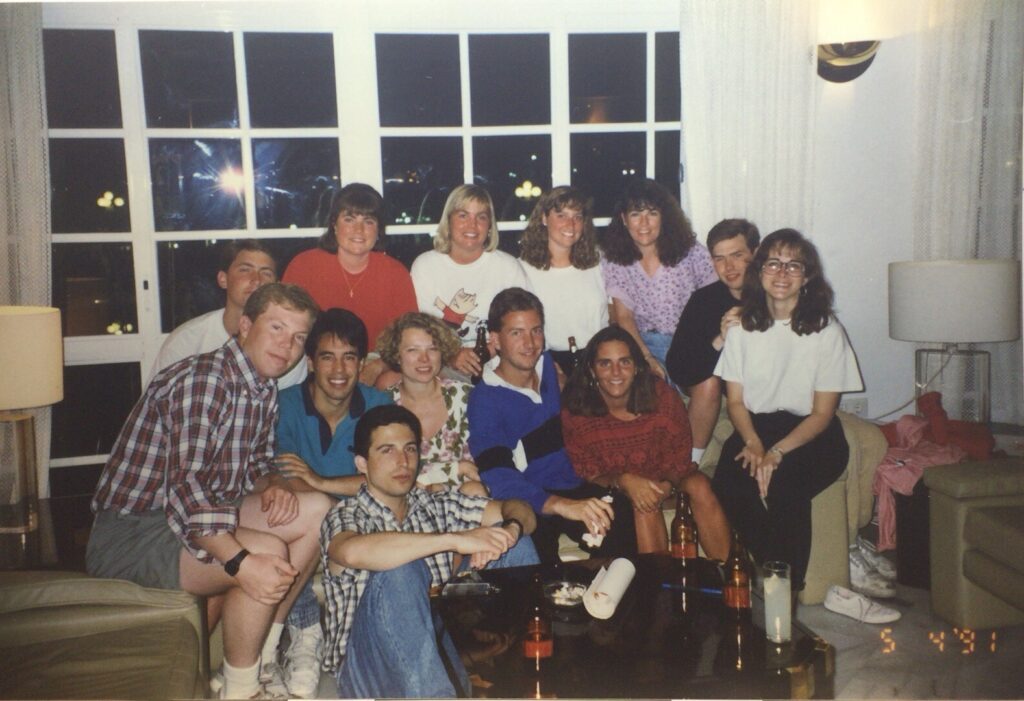
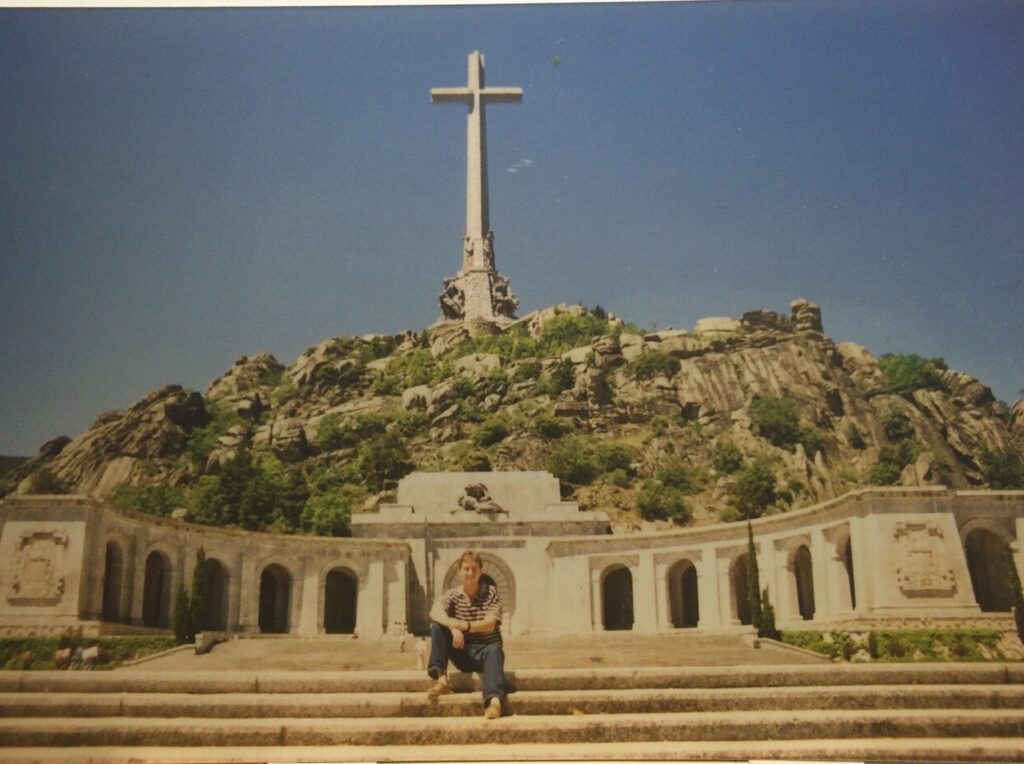
https://en.wikipedia.org/wiki/Generation_of_’98
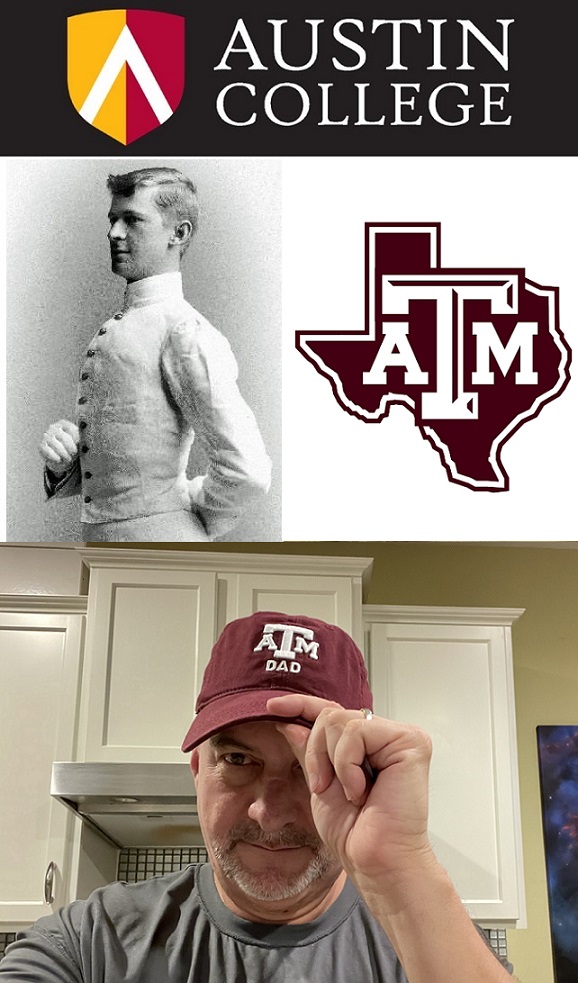
Memorial Day Preview #1, Friday, May 17th:
Teddy Roosevelt, Cecil Lyon, and the 1905 Rough Rider Reunion
Memorial Day Preview #2, Monday, May 20th:
Marc Parrish, Robert Maxey, and Spain’s “Generation of ’98”
Memorial Day Preview #3, Wednesday, May 22nd:
Austin College & Texas A&M during the 1890s Age of Empire
Memorial Day Preview #4, Friday, May 24th:
“Kangaroos Go to War,” a Marc book inspired by ties to the Dethloff family of AC & Texas A&M
Memorial Day Roo Tale, Monday, May 27th:
Teddy Roosevelt, Robert Maxey, and the Spanish-American War at San Juan Hill
=======================================
Preview #3, Wednesday, May 22nd:
Austin College & Texas A&M during the 1890s Age of Empire
So, I’ve written a Memorial Day Roo Tale about an Austin College soldier who fought in the Spanish-American War. It will be shared on Memorial Day, May 27th. Like many of my Memorial Day stories, this one has a few AC ties to Texas A&M in College Station.
College Station was home for me from 1974 to 1988, until I left for my freshman year at Austin College. AC was the exact opposite of Texas A&M: a quiet, small, private liberal arts school in the north Texas county of Grayson. And unlike Aggieland, AC had zero military history. Or so I thought at the time. Man was I WAY off.
Unlike the rest of Texas, Grayson County was pro-Union in 1861. The county, populated with settlers from the Midwest, voted against secession. After Texas white supremacists suffered a brief Civil War setback in 1865, they regrouped and launched a War of Reconstruction in pro-Union counties like Grayson. That story is told in “Murder and Mayhem: The War of Reconstruction in Texas,” by James Smallwood. By 1876, the Confederate sympathizers had triumphed.
The result was a changed Grayson County in the 1880s, occupied by a Southern nativism that the North was now willing to accept through recognition of Confederate “Lost Cause” mythology and monuments. With one condition of course: in exchange for the North looking the other way on racial injustice, the South was required to pledge allegiance under the banner of a “new nationalism.” Military programs at Texas colleges provided a way for southerners to show this loyalty, while at the same time acquiring a steady stream of enrollment revenue.
And so, the all-male Austin College adopted a compulsory military component in the 1880s, at the exact moment that Texas A&M (est. 1876) was finding its own footing as an all-male military college in the state of Texas. Yes, A&M was a public school with slightly higher enrollment. But this mattered little in an era when public dollars were meager and enrollment disparities (A&M: ~1,000, AC: ~300) were small.
AC and A&M were basically siblings by the early 1890s. Students at Austin College were known as the “cadets.” The student newspaper was called the “Reveille.” Military training was just as much a part of student life as scholarly pursuits. Each campus would have appeared nearly identical, other than the locations of the schools: AC was in the middle of a prosperous city: Sherman, the “Athens of Texas.” A&M was in the middle of nowhere, with no city to call its own.
The 1890s also saw the arrival of collegiate athletics in Texas. When the University of Texas officially formed the first football squad in 1893, Texas A&M immediately set out to do likewise. They also knew who they could count on for a game. From the December 1, 1893, Aggie Battalion (the “Batt”):
“The team to represent the [A&M] College in the state should come to the conclusion that it is time for some match games. A game will perhaps be arranged with Austin College at Sherman. The ‘Cadets’ will have a ‘happy’ task in attaining victory; but with proper practice should put up a stiff game.” Long before the arrival of “Aggies” & “Kangaroos,” the A&M “Cadets” defeated the Austin College “Cadets” in 1896 by a score of 22-6 in Sherman.
AC returned the favor in 1897, traveling to A&M for a rematch. That game took place at the Simpson Drill Field, as Kyle Field was still nearly a decade away. From the Batt: “After a stubborn fight the Crimson and Gold Banner of Austin College was furled in defeat and the A&M Crimson [now Maroon] and White unrolled victoriously once more.” Or in other words, AC soldiers battled A&M soldiers at the A&M soldier drill field just months before they all marched off to join the Rough Riders in the Spanish-American war.
This “new nationalism” taking root in military programs at AC & A&M led to significant crossover enrollment. Cecil Lyon, AC Class of 1884 and close friend of Teddy Roosevelt (see preview story from Friday, 5/16), attended Texas A&M as a cadet until 1886. One of Lyon’s AC professors, J.C. Edmonds, was later the Commandant (top-ranking member) of the A&M Corps of Cadets. Edmonds succeeded Edwin Jackson Kyle (of Kyle Field fame) as Aggie Commandant in 1899, one year after AC grad Robert J. Maxey was fighting in the Spanish-American War alongside Teddy Roosevelt.
Roosevelt was a huge supporter of American imperial ambitions in the 1890s; much of the 20th century saw this martial age undone. AC got to work on this early, dropping its compulsory military component in the 1900s and admitting women in 1918 (the next-to-last Texas school to do so; thank you Kappas!). Over the subsequent decades, AC would transform into what it is today: a small, private, liberal arts school. AC Presidents Thomas Clyce (1900-1932) and John Moseley (1953-1978) deserve much of the credit for this transformation.
Texas A&M dropped its compulsory military component in the 1960s and began admitting women soon thereafter (the last Texas school to do so; the Parrishes know one of the first women enrollees). D-Day hero and Aggie President James Rudder (1959-1970) pulled off what some thought impossible, transforming A&M from “The Citadel” (in South Carolina) into a University of South Carolina. That transformation was also the life’s work of my parents Linda & Paul, two Aggie liberal arts faculty members and administrators who arrived in College Station in the 1970s with little Marc in tow.
Texas A&M’s military past is well known and always present, showing itself whenever an Aggie yells ”load, ready, aim, fire, boom, reload!” AC’s military past is more obscure. But it exists. The “Kangaroo Court” was a cadet hazing ritual that dates to its military days in the 1890s. The tradition lingered into the 20thcentury, so much so that when it came time for AC to select a mascot in 1912, the choice of Kangaroo was easy. Austin College’s military past is more subtle, but still heard every time an AC student yells “Go Roos.”
Today, I’m an Austin College Kangaroo who is also a Texas A&M Dad. My engineer son begins his sophomore year next fall in Aggieland; Dianne and I will be visiting College Station frequently. Every time I go home, I feel like I hold a little Roo/Aggie secret: While Austin College & Texas A&M look nothing alike today, they are more closely related than anyone else realizes. For a time during the American Age of Empire, these two nearly identical schools of soldiers worked together, played together, and went off to fight together in the Spanish-American War.
The 2024 Memorial Day Roo Tale is about Robert J. Maxey, a Kangaroo who charged San Juan Hill alongside Rough Rider Teddy Roosevelt. It will be shared on Monday, May 27th. Austin College had cadets fighting in the Spanish-American War. But did Texas A&M? You bet. According to the book “Texas Aggies Go to War,” by Dr. Henry Dethloff, 38 Aggies served in that conflict. That book, and the Dethloff family of Texas A&M, is the subject of the next Memorial Day Roo Tale Preview.
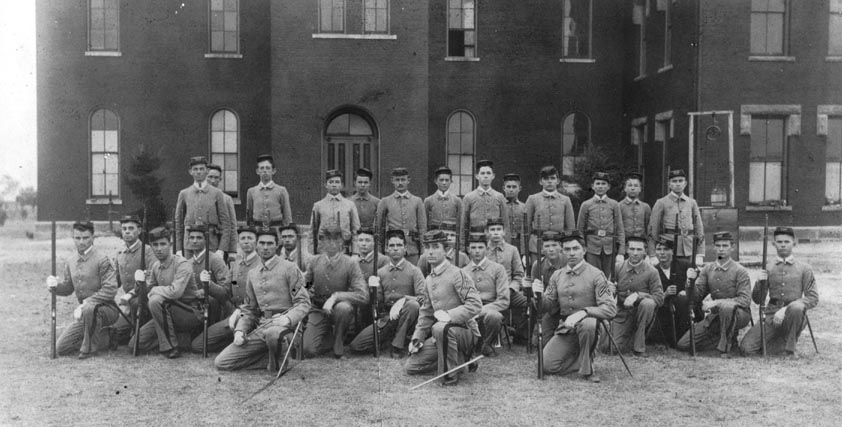
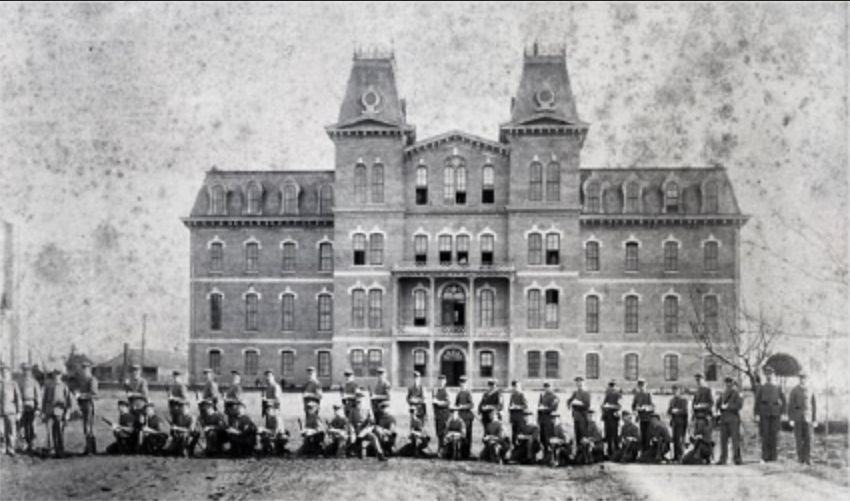
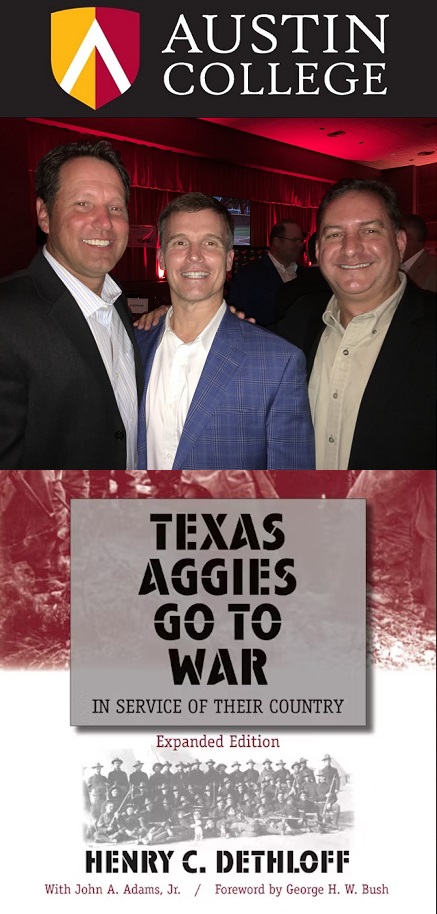
Memorial Day Preview #1, Friday, May 17th:
Teddy Roosevelt, Cecil Lyon, and the 1905 Rough Rider Reunion
Memorial Day Preview #2, Monday, May 20th:
Marc Parrish, Robert Maxey, and Spain’s “Generation of ’98”
Memorial Day Preview #3, Wednesday, May 22nd:
Austin College & Texas A&M during the 1890s Age of Empire
Memorial Day Preview #4, Friday, May 24th:
“Kangaroos Go to War,” a Marc book inspired by ties to the Dethloff family of AC & Texas A&M
Memorial Day Roo Tale, Monday, May 27th:
Teddy Roosevelt, Robert Maxey, and the Spanish-American War at San Juan Hill
=======================================
Preview #4, Friday, May 24th:
“Kangaroos Go to War,” a Marc book inspired by ties to the Dethloff family of AC & Texas A&M
So, I’ve written a Memorial Day Roo Tale about an Austin College soldier who fought in the Spanish-American War. It will be shared on Memorial Day, May 27th. Like all of my Memorial Day stories, this one was good fun to research and write.
But while writing, I also solved a problem. Where am I gonna put this story permanently? My AC books to date are already published. Do I include this story in a new book? What would that book be about? And what would I call it?
And then the answer came to me. Marc, just follow the lead of the family of Kangaroo Carl Dethloff.
Carl Dethloff is, like me, an A&M Consolidated Tiger who was raised in College Station, TX. I chose AC for many reasons, and one reason was that Carl (and John Fedora) were already there. My concerns were relieved if AC was acceptable for these two College Station cats.
Here’s the thing about College Station kids. Our parents, who were usually associated with Texas A&M, were exceptional. Not exceptional as in all parents are exceptional. I mean, like, they did some really cool stuff! My folks Linda & Paul, former faculty and administration at A&M, are included in the mix.
Texas A&M, both its military past and on my own childhood, influences the Memorial Day Roo Tales. While my political views of America’s conflicts span the spectrum from approval to disapproval, there’s no doubt that the exploits of Roo soldiers make for great storytelling. Storytelling is something Texas A&M does well; it’s something I try to emulate for Austin College.
To date, I’ve written Memorial Day Roo Tales which cover conflicts from the Spanish-American War & World War I to World War II & Vietnam. Not surprisingly for a school as old as AC, Roos have also taken part in conflicts from the Mexican War & Civil War up to the present day. Heck, there are even ties to the Alamo. You know what would make for a great new AC book? A book of Memorial Day Roo Tales stretching 200 years back to the birth of the American republic.
And I’ve got a Texas A&M model to use for this Austin College idea. The book “Texas Aggies Go to War,” by Dr. Henry Dethloff. Carl’s Dad.
Dr. Henry Dethloff joined the Texas A&M faculty in 1969, a year before I was born. He was the Chair of the Department of History at A&M in 1985, a year I was watching Carl play basketball for our Consol Tigers in College Station. Dr. Dethloff wrote many books on a wide range of historical topics, including his beloved Aggieland. “Texas Aggies Go to War” relives the experiences of Aggie cadets in the American conflicts that defined Texas A&M. It is probably fair to call Dr. Dethloff, who passed in 2019, an Aggie equivalent of AC’s Dr. Light Cummins.
And so, I’m going to place this 2024 Memorial Day Roo Tale about a Kangaroo during the Spanish-American War alongside existing tales already written. Future Memorial Day Roo Tales will stretch back further in time and include American conflicts that no other Texas school (including Texas A&M!) can reach. Then, they’ll all be part of a book.
And this Memorial Day Roo Tale book idea already has a tentative name too: “Kangaroos Go to War,” inspired by Dr. Henry Dethloff, his family, and the Texas A&M community who made me who I am before my arrival at Austin College.
The 2024 Memorial Day Roo Tale is about Robert J. Maxey, a Kangaroo who charged San Juan Hill alongside Rough Rider Teddy Roosevelt. It will be shared on Monday, May 27th. The story, to be included in a future book called “Kangaroos Go to War,” may not change your political views about this American conflict. But one thing is for sure. If you are an AC graduate, it will make you proud to be a Roo.
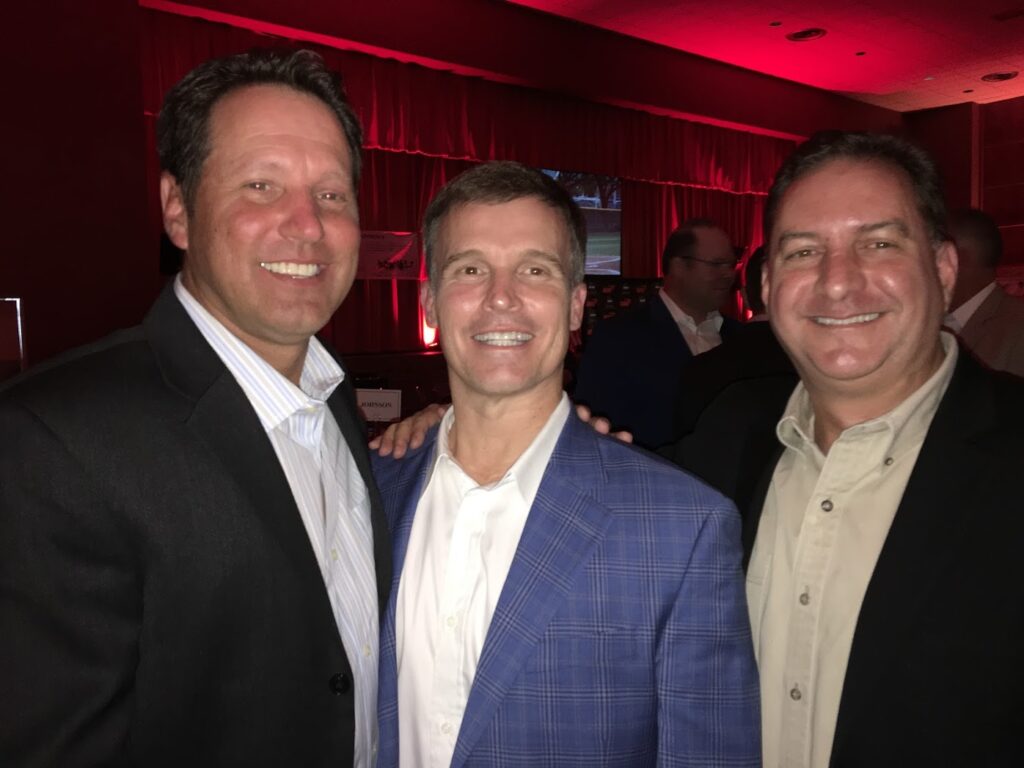
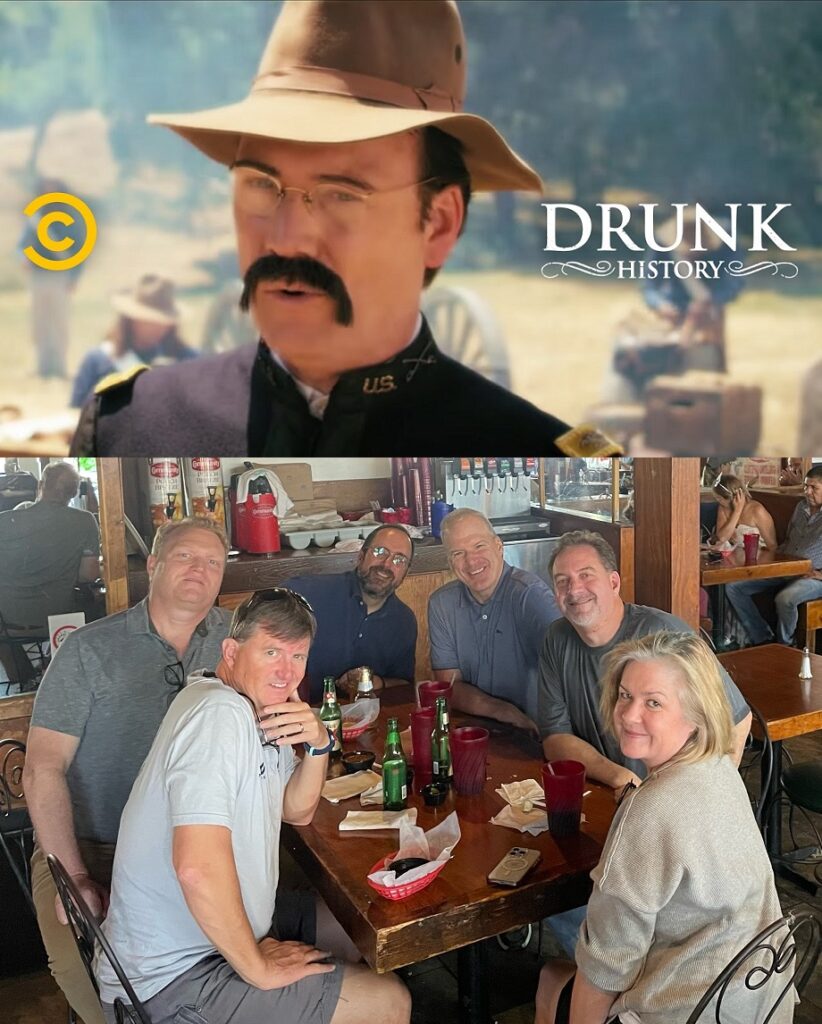
So, I’ve written a Memorial Day Roo Tale about an Austin College soldier who fought in the Spanish-American War alongside Teddy Roosevelt & the Rough Riders. It will be shared on Memorial Day, May 27th.
If lovely Dianne were in charge, that Memorial Day Roo Tale would look a bit different. You see, Dianne & I are fans of the Comedy Central series “Drunk History.” She thinks getting me liquored up and then having me tell the story is the way to go.
She’s also suggested that my AC buds act out my ramblings, like they do on “Drunk History.” My AC buds? They think the idea is a pretty good one too. A few of them have (VERY rudimentary) acting experience from AC days, so they’d be ready. Trust me, you’ll want to skip their prior work.
Dianne and I got with the buds last weekend in San Antonio; we then dropped by the Menger hotel, the site of Teddy Roosevelt recruiting the Rough Riders in 1898. I bet when I hit the men’s room in San Antonio, Dianne and the fellas were busy scheming on the inevitable Marc “Drunk History” Roo Tale.
For now though, enjoy the ACTUAL “Drunk History” episode of Teddy Roosevelt, his Rough Riders, and the “charge” up San Juan Hill. It’s how Roo Tales would be going forward, if my AC buds and lovely Dianne were in “charge.”
